Paneer pakoras are a popular snack in India that's made by frying paneer cheese in a batter made from gram flour and spices. They're delicious!
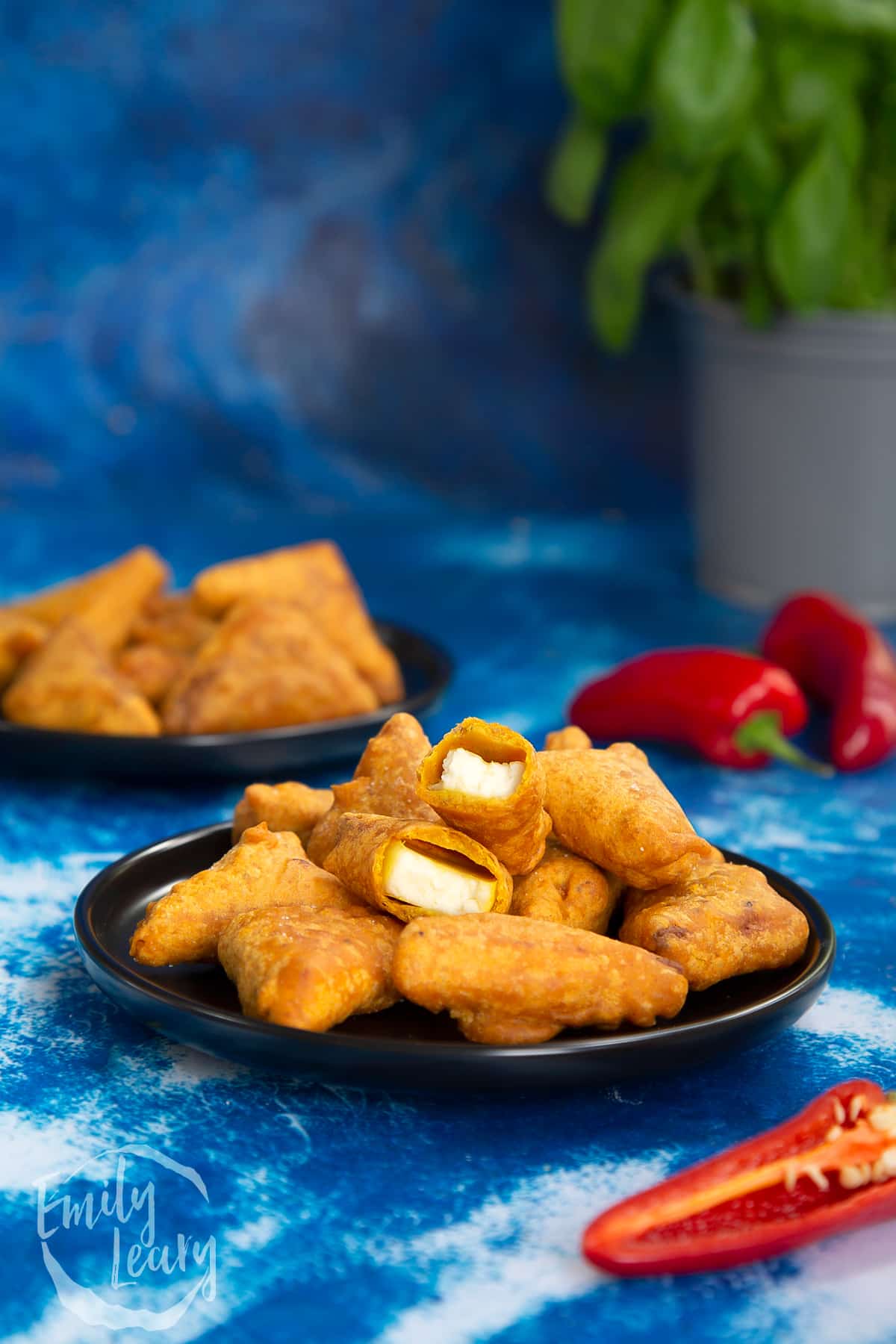
Paneer (also known as ponir or Indian cottage cheese) is a fresh cheese made from milk made by by curdling milk with a lemon juice or vinegar. It has a firm, very slightly crumbly texture and a mild, milky flavor.
It's a great source of protein and calcium and is naturally low in fat. Paneer is a little bit like halloumi in that it doesn't melt when exposed to heat, and this makes it's perfect for adding to curries and using to make delicious paneer pakoras.
I'm a big fan of pakoras of all kinds as they make for such tasty side dish, snack, or serve at parties or to take on picnics.
A pakora is a type of fritter that's popular in India and Pakistan. They're made by frying vegetables, cheese or meat in a batter of gram flour and spices, creating a crisp outer and pancake like inner.
Pakoras tend to be made in one of two ways. Either pieces of the chosen ingredient are dipped in the batter and fried, or chopped/shredded ingredients are mixed with the batter before spoonfuls are lowered into the oil.
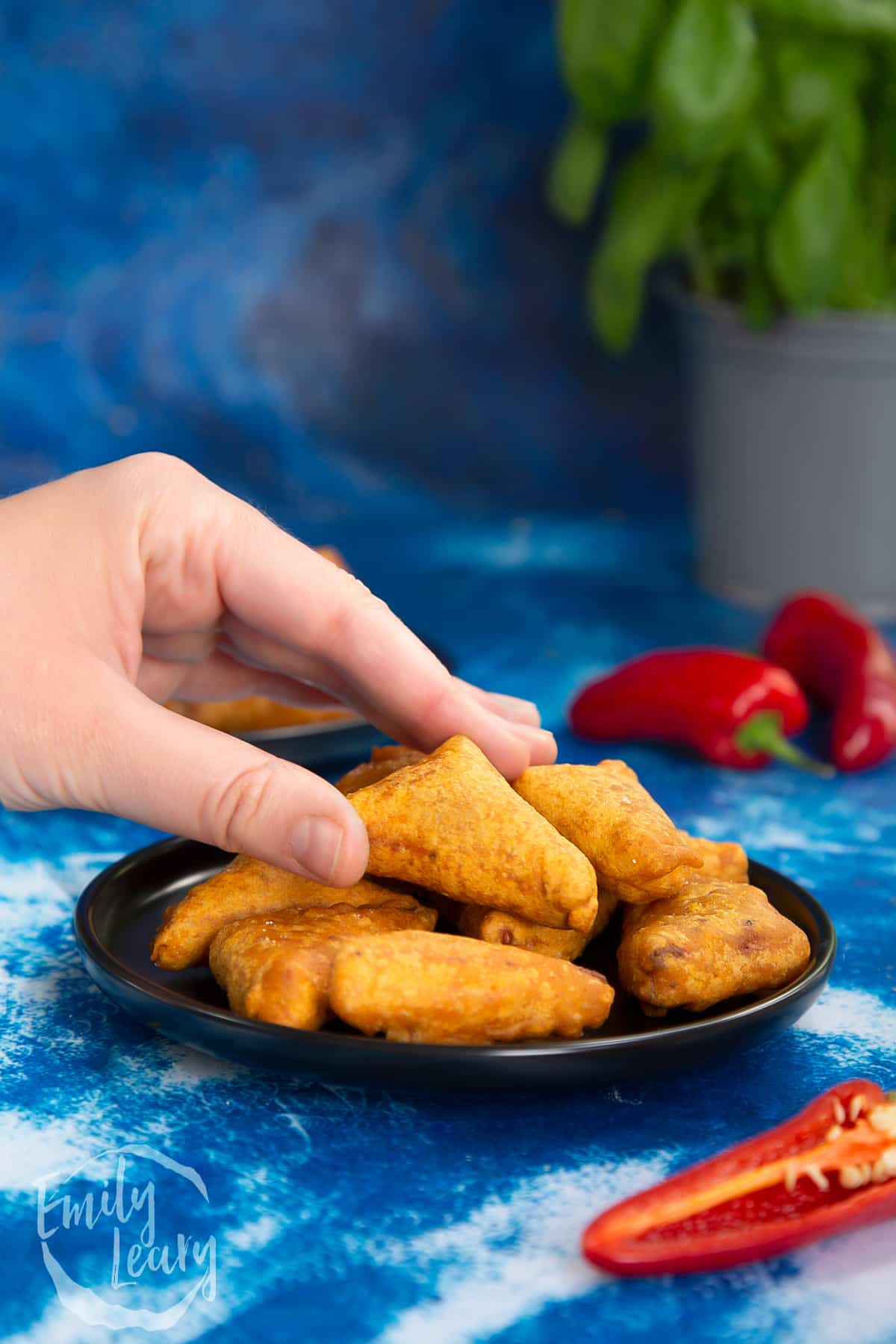
The dipping method is the best approach for paneer, so in this recipe you'll slice the paneer into thin triangles and prepare a batter of gram flour (also known as chickpea flour or besan), a little rice flour (for texture), cumin, coriander, turmeric, chilli, water and a little salt and pepper.
The paneer triangles are easy to coat and fry in about 5 minutes, so you'll be enjoying your paneer pakoras in no time! Serve them hot and fresh with mint chutney or ketchup on the side.
Here's the full paneer pakora recipe, complete with step-by-step photographs to guide you through the process.
I hope you love these paneer pakoras as much as I do! Let me know how you get on in the comments below.
Ingredients
- 125 g (4.4 oz) chickpea flour
- 25 g (0.9 oz) rice flour
- 1/2 tsp (0.5 tsp) salt
- 1/4 tsp (0.3 tsp) freshly ground black pepper
- 1/2 tsp (0.5 tsp) chilli powder
- 1/2 tsp garlic powder
- 1/4 tsp (0.3 tsp) ground coriander
- 1/2 tsp (0.5 tsp) turmeric powder
- 1/2 tsp (0.5 tsp) cumin
- 1/2 red chili finely chopped
- 225 g (8.8 oz) paneer cut into thin triangles
- vegetable oil to fry
Equipment
- Deep fat fryer or suitable high-sided saucepan
Instructions
Put the chickpea flour, rice flour, salt, coriander, chilli powder, turmeric, garlic powder, cumin and fresh chilli in a large mixing bowl and whisk together to confirm.
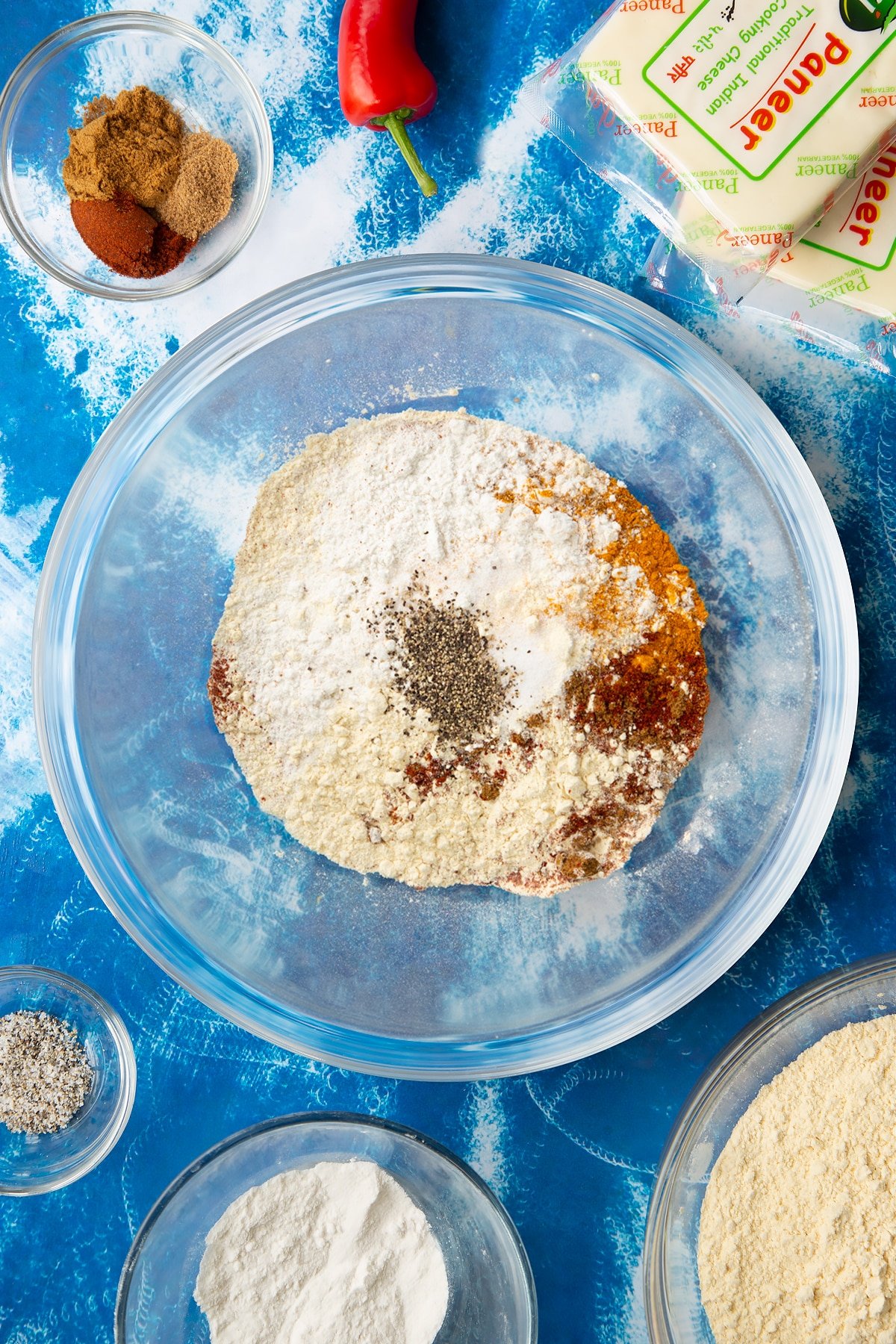
Measure 175ml (3/4 US cups) of water and add a little at a time, whisking until you have a thick, pancake-like batter - you might not need all of the water. Leave to rest for 10 minutes.
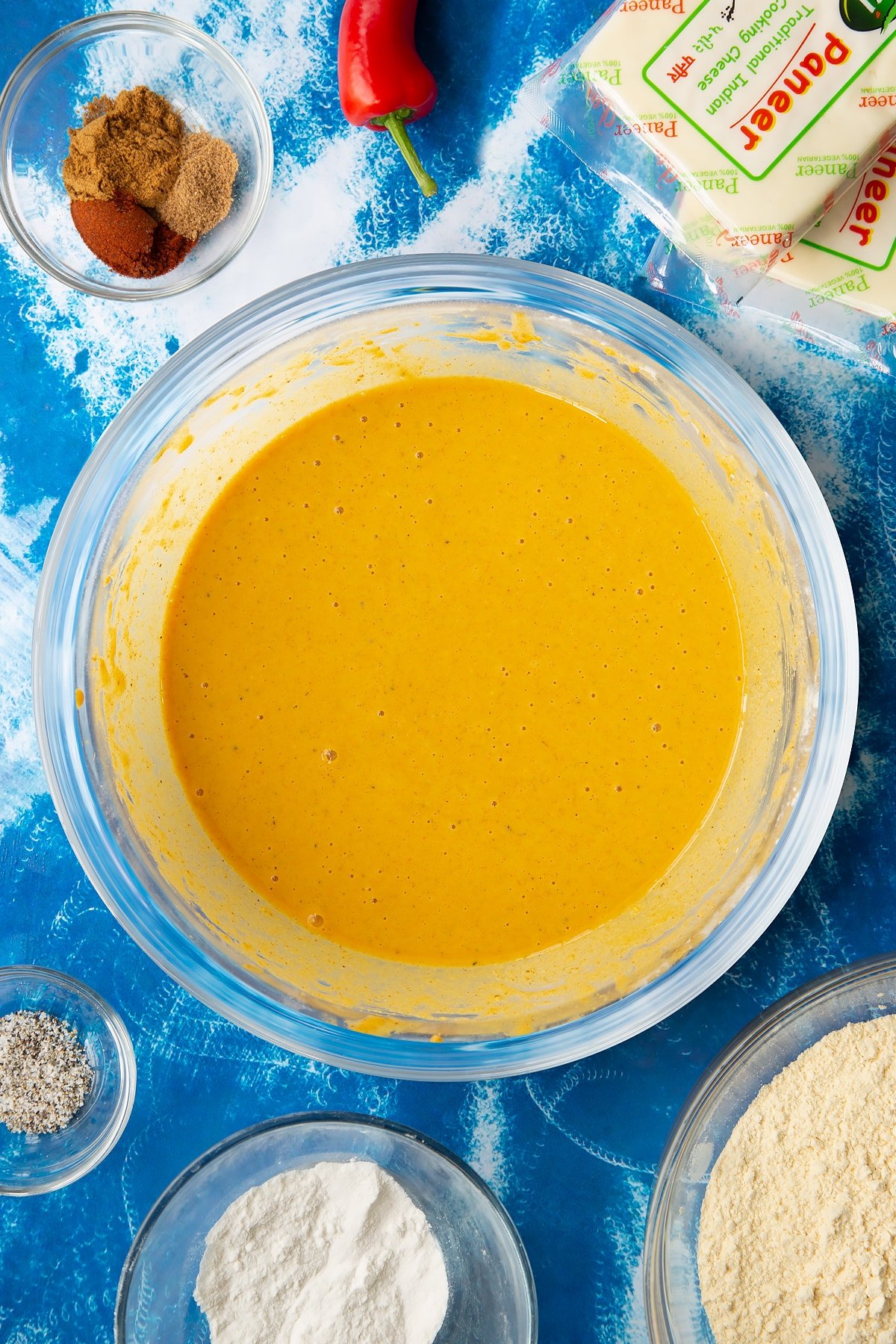
Prepare the oil in your deep fat fryer or a large, high-sided saucepan. It’s no more than one third full to allow for safe expansion during heating and cooking.
Heat the oil to 180C (355F) or until a little bit of batter dropped into the oil bubbles.
Put a few pieces of paneer into the batter and gently turn so that they are well coated. Don’t dip all of them at once as you’ll overcrowd the pan. Aim for 4-5 pieces at a time.
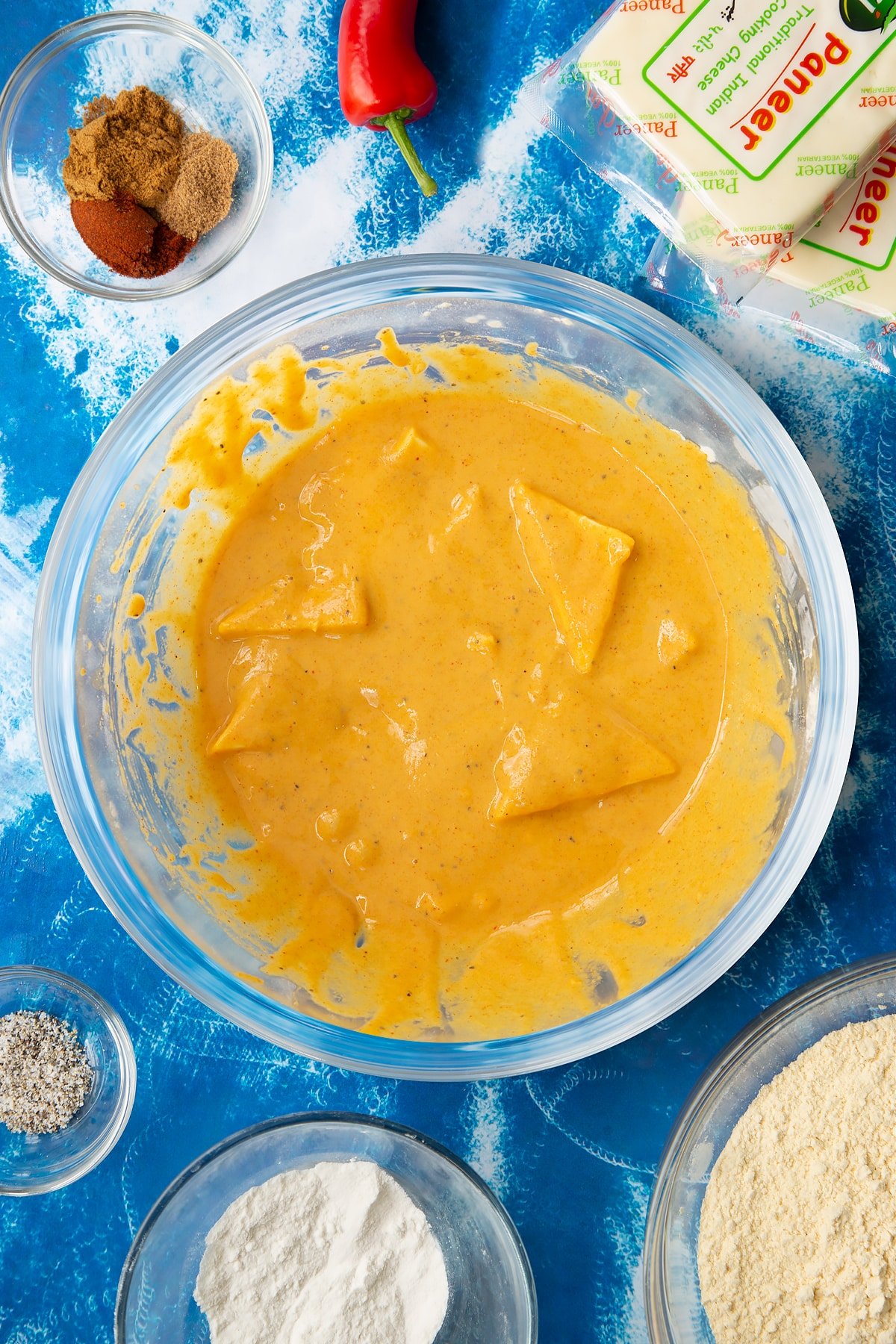
Lower the coated paneer pieces into the oil slowly so that they don’t drop straight to the bottom and stick.
Fry for 5-6 minutes until crisp and golden, turning gently as needed.
Lift from the pan using a slotted spoon or straining spoon and place on a plate lined with kitchen paper to allow the oil to drain.
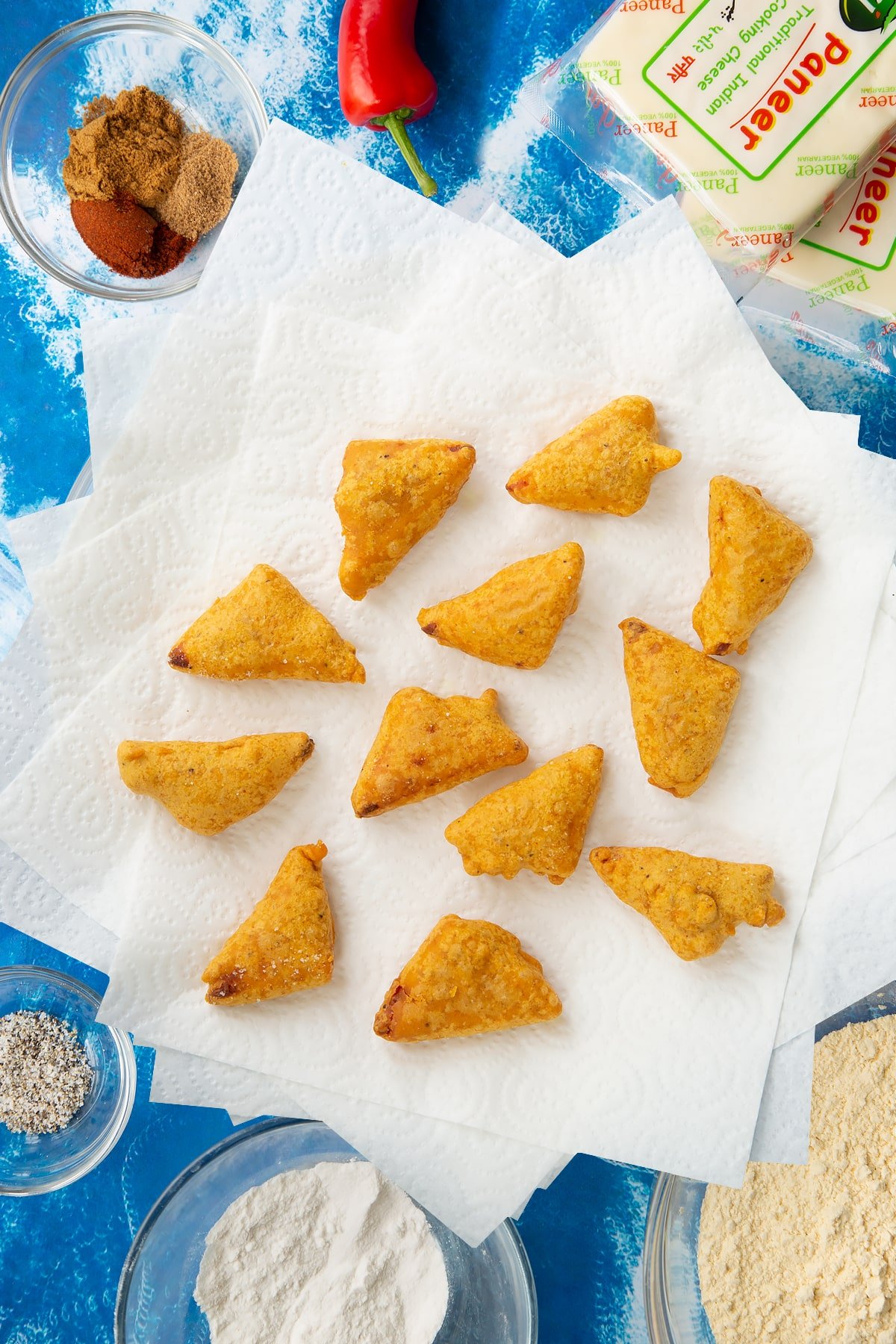
If you like, you can place the drained pakora on a baking sheet in a low oven to stay hot and crisp while you fry the rest of the batch.
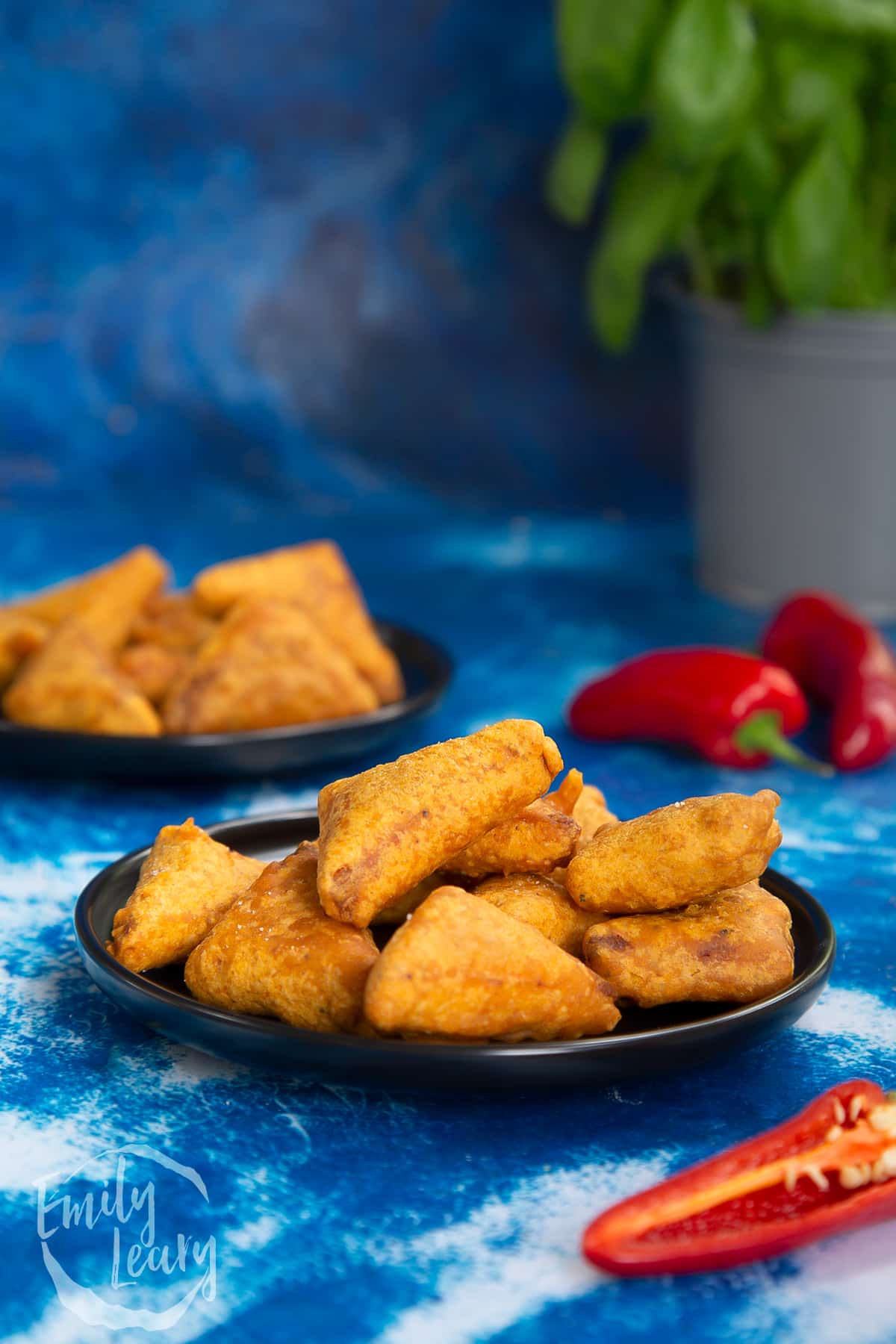
Enjoy!
Pointers, tricks and troubleshooting tips for the perfect Paneer pakora
Are paneer pakora easy to make?
Paneer pakora is actually quite easy to make! All you need is some sliced paneer cheese, a batter made from gram flour and spices, and some oil for frying.
The batter should be nice and thick so that it coats the paneer well. Fry the pakora in hot oil until they are crisp and golden brown. Then serve with chutney or ketchup.
Of course, there are more steps to it than that, but this guide should help you get every step of the recipe spot on, for the perfect Paneer pakoras.
As with all my recipes, I've included photos for each step of the recipe. So you can see exactly what the batter should look like, and how the Paneer pakoras should be cooked.
If you're nervous about cooking with hot oil, I've also included some tips to help you fry the Paneer pakoras without any accidents.
What is paneer pakora?
Paneer pakora is a snack that originated in India. It is made by frying paneer cheese in a batter made from gram flour and spices. Paneer pakoras are usually served with chutney or sauce.
Paneer pakora is often made by slicing and filling paneer with green coriander and chilli chutney before battering and frying. However, this recipe is for a paneer pakora without any filling.
It can be difficult to get the filling right without the paneer bursting in the oil, so skipping that step makes things easier. You can always serve your pakoras with a coriander dip for the flavour.
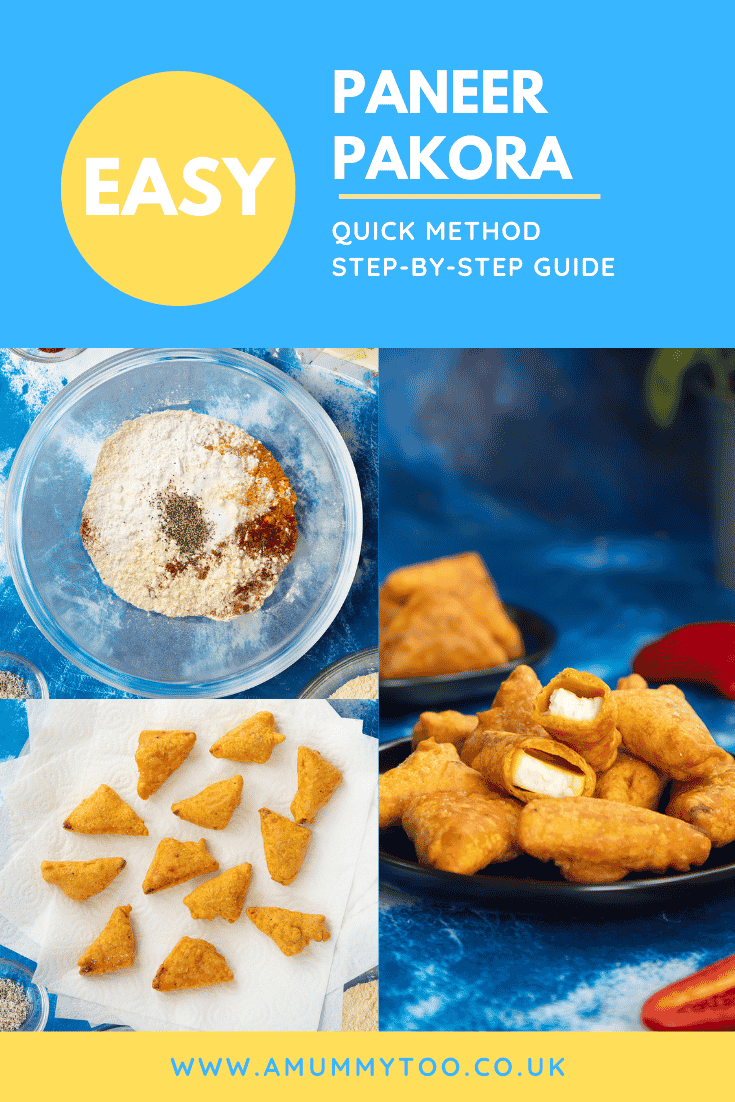
What is paneer?
Paneer is a type of Indian cottage cheese made by curdling milk with a lemon juice or vinegar. It is a fresh cheese that is not aged or salted like other cheeses, and has a mild, milky flavour. Paneer is a good source of protein and calcium, and is low in fat.
What is the difference between Paneer and other cheeses?
Paneer is a fresh cheese made from cow's milk. It is very similar to cottage cheese, but it has a higher fat content. Paneer does not melt when heated, which makes it
What is the difference between Paneer Pakora and Paneer Tikka?
Paneer tikka is a dish that is made by marinating paneer cheese in spices and then grilling it. Paneer pakora is made by coating paneer cheese in a batter and then frying it.
What does pakora mean?
The word pakora or pakoda is derived from the Sanskrit word "pakvavaḍa", which means "fried cake".
Will I need any special equipment to make Paneer pakora?
There's always a complete list of suggested equipment on the recipe card below my recipes if you're in doubt.
I also always include links to example products, to show exactly what I used to make each recipe.
How can I tell if my paneer has gone off?
Paneer is a fresh cheese with considerable water content, so it won't last as long as some other types of cheese.
You can tell if your paneer has gone off if it has developed a sour smell or taste, or if it has changed colour from white to yellow. If you're unsure, it's always best to throw it out.
Paneer is softer than a hard cheese like parmesan, so mould can penetrate through to the centre. This means you can't just slice off a mould corner and use the rest of the cheese.
Is Paneer pakora suitable for vegetarians?
Yes, paneer pakora is suitable for vegetarians as they do not contain any meat or fish.
Animal-derived products can be used to thicken, colour or flavour sweet and savoury food, so it sneaks into the most surprising ingredients!
So always make sure that you double-check all of your ingredients labels to ensure that they are vegetarian. Also, don't forget to check anything extra that you intend to serve with your recipe.
Is Paneer pakora suitable for vegans?
No, paneer pakora is not suitable for vegans as they contain paneer cheese, which is made from milk.
There are some vegan alternatives to paneer cheese available, so it might be possible to make a vegan version of this recipe. However, I have not tried this so I cannot guarantee that it will work.
If you're looking for a vegan pakora, I have plenty of other pakora recipes on the site including:
When cooking for people who don't eat animal-derived food, always make sure that you double-check all of your ingredients labels to ensure that they are suitable. Also, don't forget to check anything extra that you intend to serve with your recipes like dips or sauces.
Are Paneer pakora gluten-free?
Yes! Paneer pakora is gluten-free, as it is made with chickpea flour and rice flour. Gluten is a protein found in wheat, barley and rye, and not in chickpeas or rice.
Make sure to check all of your ingredient labels carefully if you're making this for someone with gluten intolerance. Some brands of chickpea flour and rice flour can be contaminated with gluten if they are processed in the same factory as wheat products.
Are Paneer pakora keto-friendly?
Yes, Paneer pakora is keto-friendly as it is made with chickpea flour and rice flour. Gluten is a protein found in wheat, barley and rye, and not in chickpeas or rice.
Make sure to check all of your ingredient labels carefully if you're making this for someone who is following a keto diet. Some brands of chickpea flour and rice flour can be contaminated with gluten if they are processed in the same factory as wheat products.
Is Paneer pakora healthy?
Paneer pakora is fried food, so it's not the healthiest option. However, you can make it healthier by baking it instead of frying it.
To make baked paneer pakora, preheat your oven to 200C/400F/Gas 6 and line a baking tray with parchment paper.
Coat your paneer pieces in the batter, and then place them on the prepared baking tray. Bake for 15-20 minutes until golden brown and cooked through.
You could also make your paneer pakoras in an air fryer. To make paneer pakora in an air fryer, you could try coating your paneer pieces in the batter and then placing them in the basket of your air fryer.
Cook at 200C/400F for 10 minutes until golden brown and cooked through.
I haven't tried making air fryer pakoras, so let me know how it goes in the comments below!
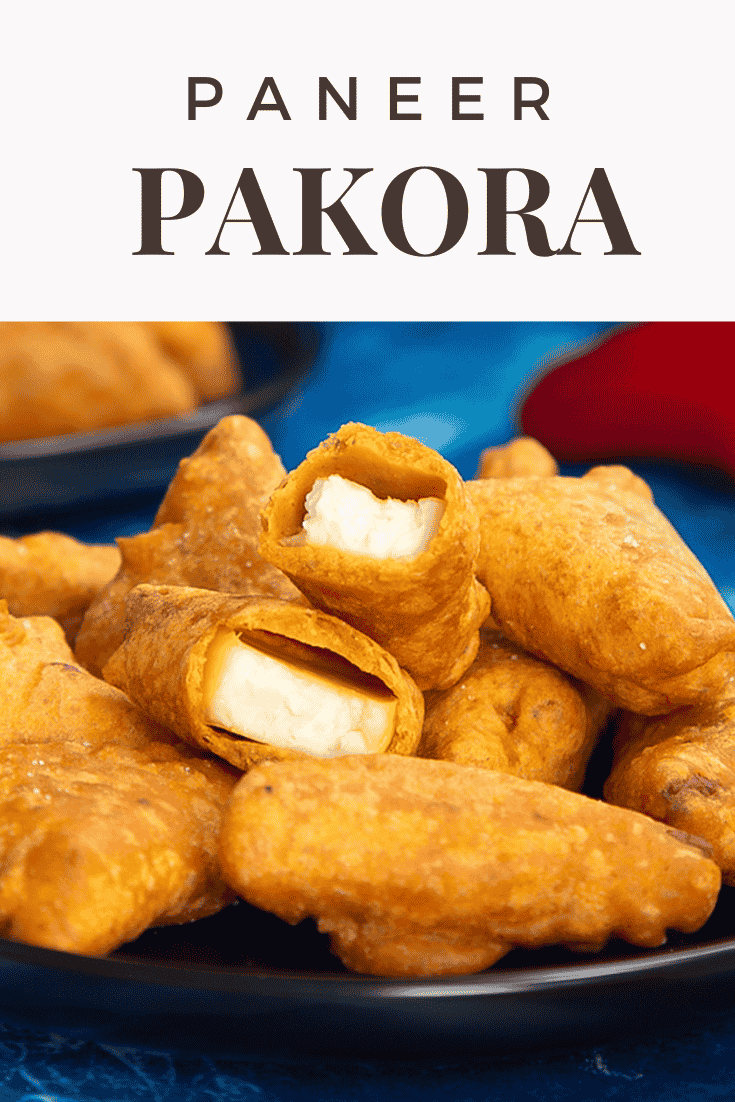
Is Paneer pakora safe to eat while pregnant?
Yes, Paneer pakora is safe to eat while pregnant as long as the cheese is made from pasteurised milk. Pregnant women should avoid unpasteurised dairy products as they can contain harmful bacteria.
Make sure to check the label of your paneer to ensure that it is made from pasteurized milk.
Make sure that all of your ingredients are in good condition and that you prepare this meal safely and hygienically.
A Mummy Too does not offer medical advice. Please seek help from a medical professional if you need further information or have any concerns.
Is Paneer pakora suitable for babies and toddlers?
No, Paneer pakora is not suitable for babies and toddlers as they are deep-fried. Deep-fried foods are not recommended for young children as they contain high amounts of fat.
Equally, these pakoras contain milk from the paneer. Which is unsuitable for children who have not had dairy introduced to their diet.
A Mummy Too does not give medical advice. If you have any questions or concerns please speak to a health professional.
The NHS has some fantastic resources on their website on what to feed babies and young children.
What goes well with Paneer pakora?
Paneer pakora goes well with a number of different dipping sauces. My personal favourites are mint yoghurt or mango chutney.
Paneer pakora also goes well with a salad and raita. I like to serve mine with a simple cucumber raita.
Can I make the Paneer pakora without paneer?
You could, but then they wouldn't be paneer pakora, would they? If you aren't a fan of paneer, or you avoid eating dairy or animal products, I have plenty of vegan pakora recipes on the site. So give my Cauliflower pakora a try instead!
Can I use a different kind of cheese to make Paneer pakora?
Again, you could, but then they wouldn't be Paneer pakora. Paneer is a specific type of Indian cheese that is used in this dish.
If you use a different kind of cheese, it will most likely have an unsuitable texture. The cheese with the closest texture to paneer is halloumi. Though it has a lower water content and a more greasy surface which would be difficult for the batter to cling to.
If you want to try Paneer pakora with halloumi, go ahead and give it a try. Let me know how it turns out in the comments below!
Or, if you're looking for a vegan replacement for paneer, I would recommend using tofu. Tofu is a vegan-friendly alternative with a similar texture that would work well in this recipe.
Why do I have to whisk the batter in this recipe when usually I’d fold in flour?
When you make a pakora batter, you want it to be nice and smooth so that it coats the vegetables or paneer evenly. If you just mix the flour and water together, you may end up with lumps in your batter.
Whisking the batter helps to break up any lumps of flour and results in a smoother batter. It also adds a little air to the batter which helps produce a lovely crispy coating.
How should I store Paneer pakora?
Paneer pakora is best served fresh and hot. However, if you have leftovers, you can store them in an airtight container in the fridge for up to 2 days.
How long will Paneer pakora keep?
Paneer pakora will keep in an airtight container in the fridge for up to 2 days.
Can I leave Paneer pakora out on the counter?
No, Paneer pakora should not be left out on the counter as it contains dairy products which can spoil.
Paneer pakora should be stored in an airtight container in the fridge and consumed within 2 days.
Can I make Paneer pakora ahead?
Yes, Paneer pakora can be made ahead and stored in the fridge for up to 2 days.
To reheat, simply fry the pakoras in a little oil until hot and crispy.
Can I keep Paneer pakora in the refrigerator?
Yes, Paneer pakora can be stored in an airtight container in the fridge for up to 2 days.
Can I freeze Paneer pakora?
Yes, Paneer pakora freezes well. Place your leftover pakoras in a freezer-safe container and freeze for up to 3 months.
To reheat, simply fry the pakoras in a little oil until hot and crispy.
What is Paneer pakora made of?
Paneer pakora is typically made with paneer (a type of Indian cottage cheese), vegetables such as onion
What is the best way to defrost Paneer pakora?
Paneer pakora can be defrosted overnight in the fridge or for a few hours at room temperature.
To reheat, simply fry the pakoras in a little oil until hot and crispy.
Can I make these Paneer pakoras in a different quantity?
Yes, you can easily make these Paneer pakoras in a different quantity. Simply adjust the number of ingredients in the recipe card below.
This recipe makes 24 Paneer pakora pieces, using a 225g block of paneer. So you could use half a block to produce half the amount of Paneer pakoras or another block to produce 48 Paneer pakora pieces.
The batter will usually have some leftover anyway so if you buy a bigger pack of pakora you could squeeze a few more pieces in.
How can I fry my pakora safely?
Frying food can be dangerous if you don't take the proper precautions.
First, it's important to make sure any children, animals and clumsy adults are out of the room while you cook this dish.
Make sure you have your kitchen extractor fan running and any available windows open before you begin cooking. This will help reduce the risk of smoke building up in the room.
Second, you'll need to heat your oil to the right temperature. If the oil is too cold, your pakora will absorb too much oil and be greasy. If the oil is too hot, it could splash and burn you.
I would recommend using a kitchen thermometer to check the temperature of your oil. Heat the oil to 350F/180C.
Once you've added your pakora to the hot oil, be sure to keep an eye on it. You'll want to fry it until it's golden brown and crispy.
Use a slotted spoon to remove the Paneer pakora from the oil and place them on a paper towel to drain off. Don't try to remove them from the oil by hand, or handle them by hand when they're fresh from the oil.
To avoid burns, always use tongs or a slotted spoon to carefully lower your Paneer pakora into the hot oil.
Do not overcrowd the pan as this will lower the temperature of the oil and result in soggy Paneer pakora.
Once your Paneer pakora is cooked, use a slotted spoon to remove them from the oil and place them on a plate lined with paper towels to absorb any excess oil.
As Paneer pakora are best served fresh and hot, you may want to fry them in batches so that they are all nice and crispy when you serve them.
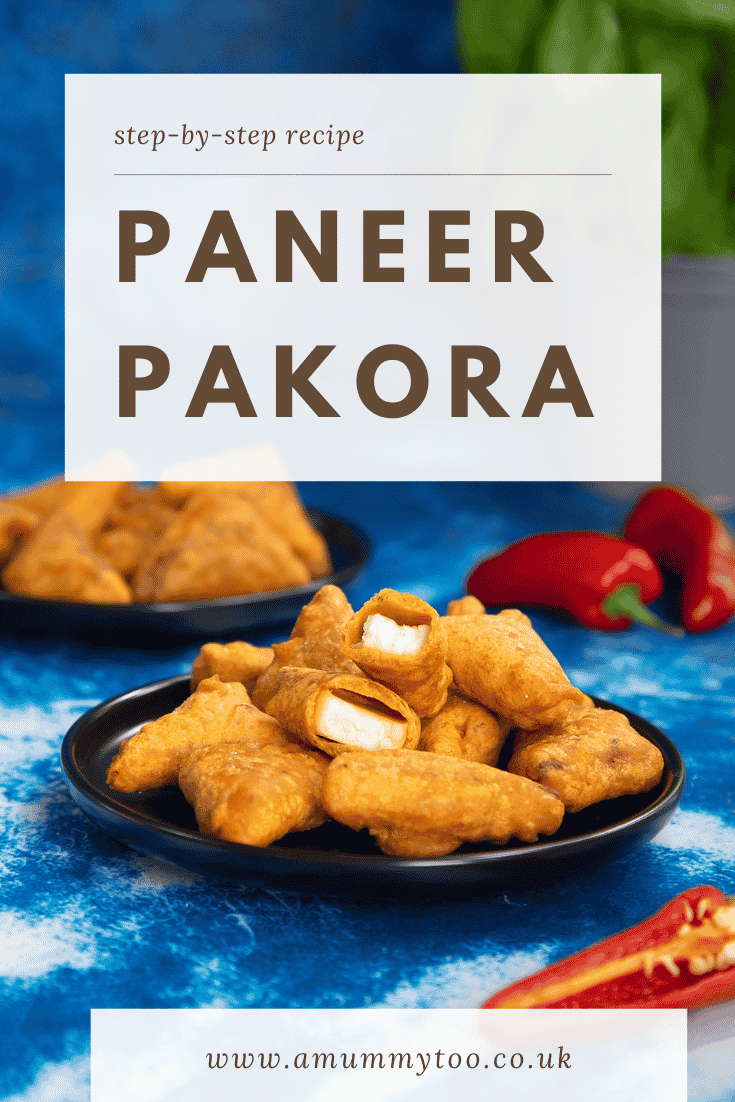
What is the best oil to use for frying Paneer pakora?
The best oil to use for frying Paneer pakora is a light vegetable oil such as canola or sunflower oil.
When frying, you should use an oil with a high smoke point. This means that the oil can be heated to a high temperature without smoking or burning.
Canola and sunflower oil have a high smoke point of around 200C-232C (400C-450F), making them ideal options for this recipe.
Can I make Paneer pakora in a stand mixer such as a KitchenAid or Kenwood Mixer?
Yes, Paneer pakora can be made in a stand mixer such as a KitchenAid.
Simply add all of the dry batter ingredients to the bowl and mix them briefly. Then gradually add the water while mixing on low speed until everything is combined and you have a smooth batter.
You can increase the mixer speed a little to whisk the batter. It's probably best to use a balloon whisk attachment so you can combine everything thoroughly and get a light batter.
Make sure you scrape down the sides once you start adding the water, so everything is combined into a smooth batter.
Can I make Paneer pakora with a food processor?
Yes, Paneer pakora can be made in a food processor.
Simply add all of the dry batter ingredients to the bowl and process them briefly. Then gradually add the water while processing on low speed until everything is combined and you have a smooth batter.
Make sure you scrape down the sides once you start adding the water, so everything is combined into a smooth batter.
The food processor will probably take less time to make the batter than if you whisked it by hand.
How can I make sure my Paneer pakora turns out perfectly?
Here are a few tips to help you make perfect Paneer pakora:
- Use good quality paneer for the best results. If you use older paneer it may behave differently and may not give you the same results.
- Make sure your batter is smooth and free from lumps. You can use a food processor or stand mixer to make sure it's really smooth.
- Add enough water to the batter so that it's a thin consistency. If it's too thick it will be difficult to coat the Paneer
- Make sure the batter is smooth and not too thick or thin.
- Allow the batter to rest for 10 minutes so it can thicken slightly.
- Make sure the oil is hot enough before adding the pakora. Otherwise, you'll end up with super greasy pakora.
- Do not overcrowd the pan when frying the pakoras.
Why did my Paneer pakora turn out dry or hard?
It should be difficult to overcook your paneer pakora, but there are a couple of ways your Paneer pakora can turn out dry or hard:
- Paneer is moist, so the most likely culprit is that you cooked it for far too long. You only need to cook your pakora until they are golden brown and crispy. Make sure to pay attention to the pakora as they cook. Don't leave them unattended or they may overcook.
- The other cause could be that the batter was too thick. Though again, this is unlikely as the paneer is moist. If your batter is too thick it will be difficult to coat the Paneer properly and this can lead to dry Paneer pakora. Make sure your batter is a smooth and thin consistency.
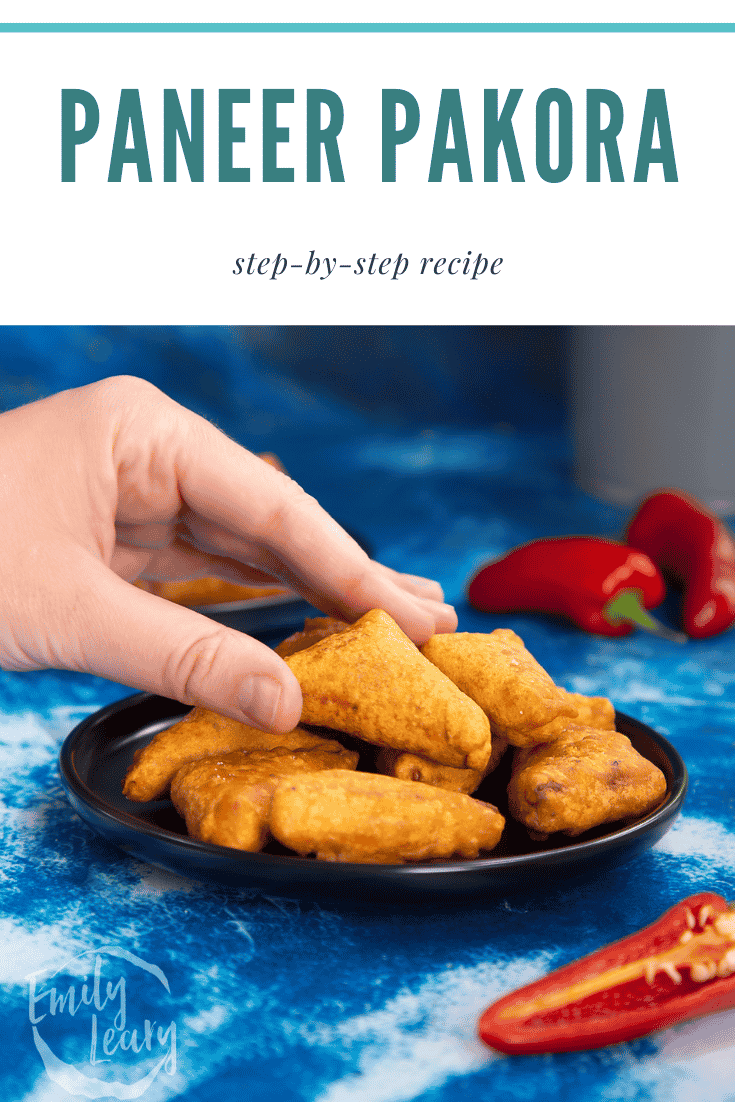
Why did my Paneer pakora turn out wet/soft/greasy?
There are a few reasons why Paneer pakora can turn out wet/soft/dense:
- First, it could be that your batter was too thick or thin. This can cause the batter not to cling to the paneer properly, allowing the oil to penetrate the paneer.
- Or it could be that the Paneer was not fresh. If the paneer was old, it will most likely be more soggy and prone to becoming mushy.
How can I add/change the flavours in my Paneer pakora?
Here are a few ideas of how you could change the flavours in Paneer pakora:
- Add some chopped fresh chilli to the batter for a bit of a kick.
- Add some finely grated ginger to the batter for a little zing.
- Add some fresh chopped herbs to the batter such as coriander or mint.
- Another spice that would work well in the pakora batter is mustard seeds. Brown mustard seeds are a staple of Indian cooking, and the flavour would complement the Paneer pakoras beautifully.
As I mentioned above, Paneer pakora is often filled with a green chutney before battering and frying.
So you could try filling your paneer with some sauce or seasoning. You can fill your paneer by poking a knife halfway through the centre to create a small pocket. You can then spoon or pipe in a filling of your choice.
Though take care not to overfill your paneer or they are likely to burst in the oil.
Where is the origin of Paneer pakora?
Paneer pakora is thought to have originated in the northern part of India. The earliest known recipe for paneer pakora was published in the book "Dal-Chawal" by P.D. Chaudhari in 1891. Though it's thought that paneer pakora has been around for much longer than that.
Paneer pakora is popular street food in India and can be found at most street markets and stalls. Paneer pakora is also served in many restaurants as a starter or side dish.
Print paneer pakora this recipe
Paneer Pakora Recipe
Ingredients
- 125 g (4.4 oz) chickpea flour
- 25 g (0.9 oz) rice flour
- 1/2 tsp (0.5 tsp) salt
- 1/4 tsp (0.3 tsp) freshly ground black pepper
- 1/2 tsp (0.5 tsp) chilli powder
- 1/2 tsp garlic powder
- 1/4 tsp (0.3 tsp) ground coriander
- 1/2 tsp (0.5 tsp) turmeric powder
- 1/2 tsp (0.5 tsp) cumin
- 1/2 red chili finely chopped
- 225 g (8.8 oz) paneer cut into thin triangles
- vegetable oil to fry
Equipment
- Deep fat fryer or suitable high-sided saucepan
Instructions
- Put the chickpea flour, rice flour, salt, coriander, chilli powder, garlic powder, turmeric, cumin and fresh chilli in a large mixing bowl and whisk together to confirm.
- Measure 175ml (3/4 US cups) of water and add a little at a time, whisking until you have a thick, pancake-like batter - you might not need all of the water. Leave to rest for 10 minutes.
- Prepare the oil in your deep fat fryer or a large, high-sided saucepan. It’s no more than one third full to allow for safe expansion during heating and cooking.
- Heat the oil to 180C (355F) or until a little bit of batter dropped into the oil bubbles.
- Put a few pieces of paneer into the batter and gently turn so that they are well coated. Don’t dip all of them at once as you’ll overcrowd the pan. Aim for 4-5 pieces at a time.
- Lower the coated paneer pieces into the oil slowly so that they don’t drop straight to the bottom and stick.
- Fry for 5 minutes until crisp and golden, turning gently as needed.
- Lift from the pan using a slotted spoon or straining spoon and place on a plate lined with kitchen paper to allow the oil to drain.
- If you like, you can place the drained pakora on a baking sheet in a low oven to stay hot and crisp while you fry the rest of the batch.
Video
Nutrition
If you enjoyed this pakora recipe be sure to check out my tomato pakora recipe or cauliflower pakora recipe too!
Pin this paneer pakora recipe
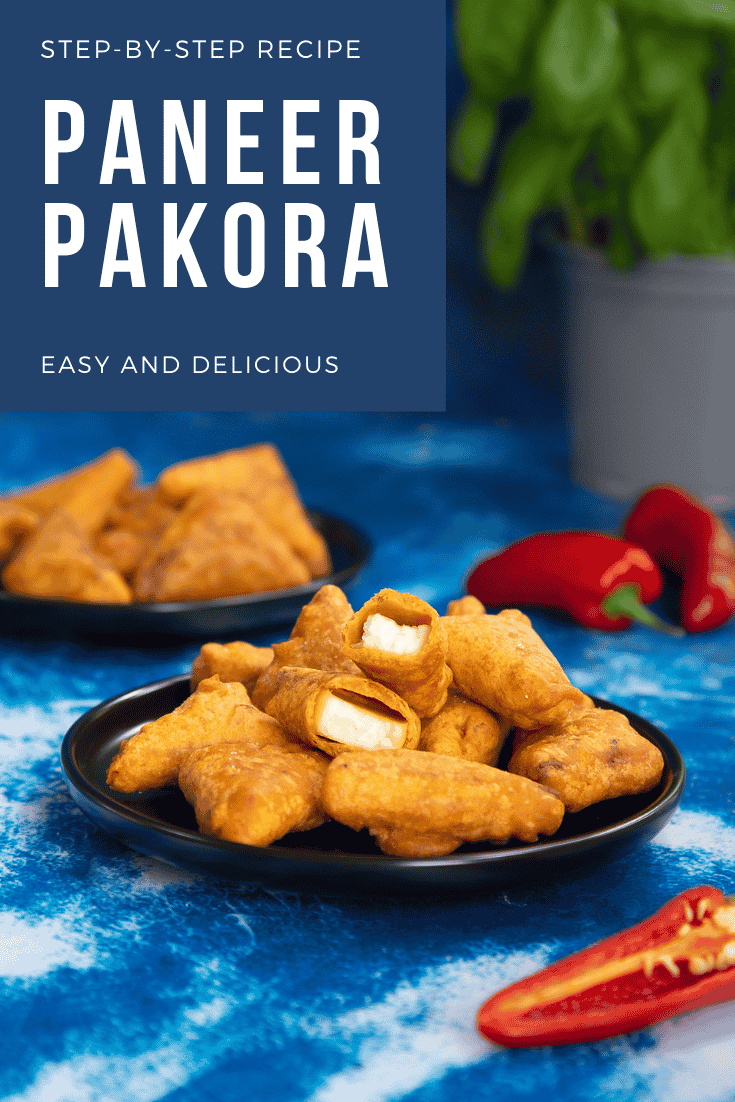
More pakora recipes to try
Have you got my book?
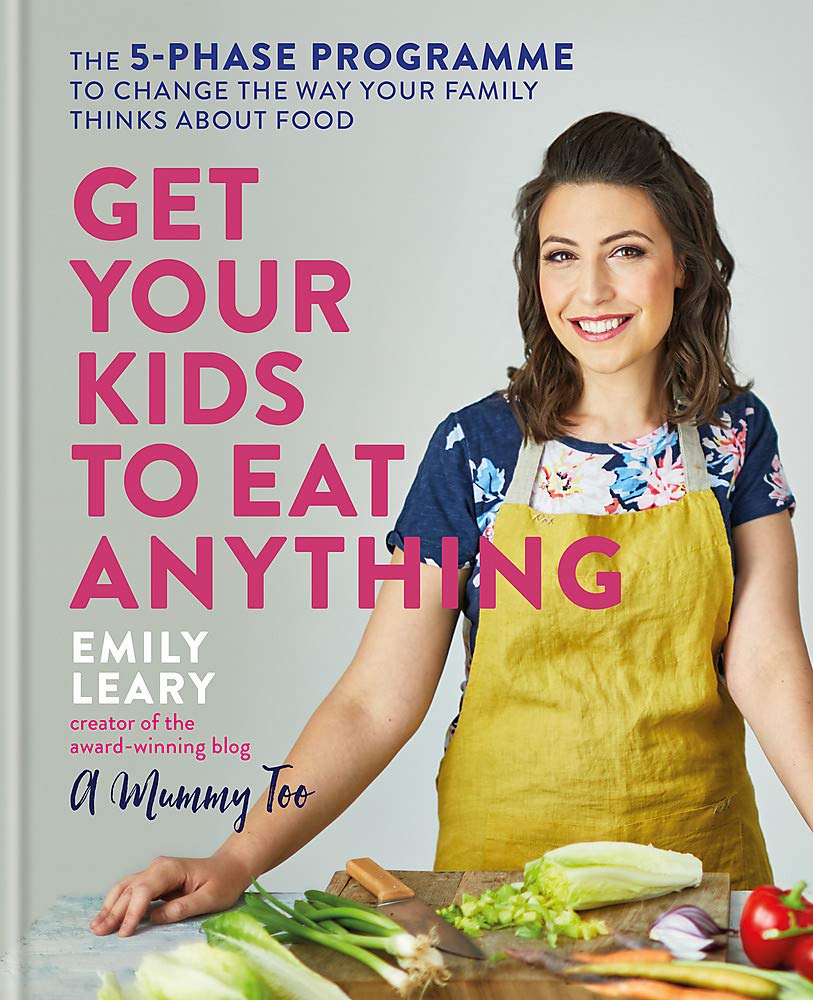
'This is a great kids cookery book. Emily is a star' - Simon Rimmer
'The book I'd like to force into any mother's kitchen' - Prue Leith
"A fab book with a plan." - Jane Devonshire, 2016 Masterchef UK winner
'Emily has managed to combine her mummy knowledge and passion for food to make a truly helpful and brilliant cookbook' - Priya Tew, RD, BSc (Hons), Msc
Get Your Kids to Eat Anything is an achievable 'how to' for parents in the battle to overcome picky eating and 'make new the norm'. Emily Leary's unique 5-phase programme looks at the issue of 'fussy eating' in a holistic way that links imagination with food, and which situates parents alongside - not in opposition to - their children.

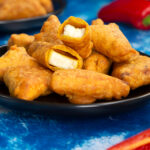
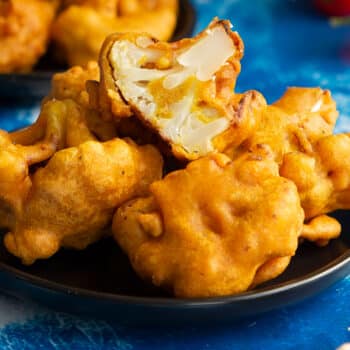
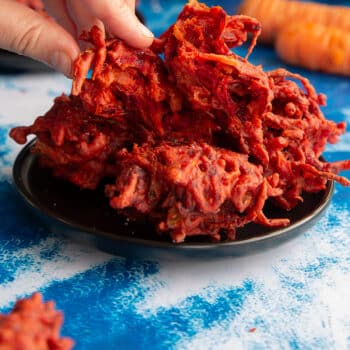
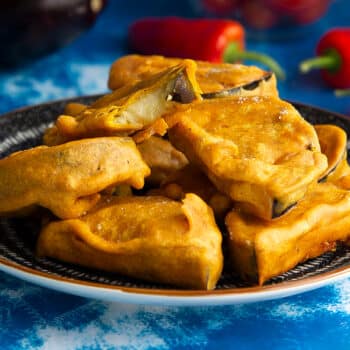
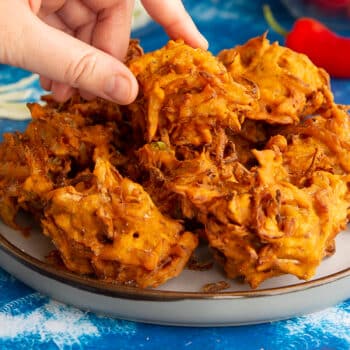
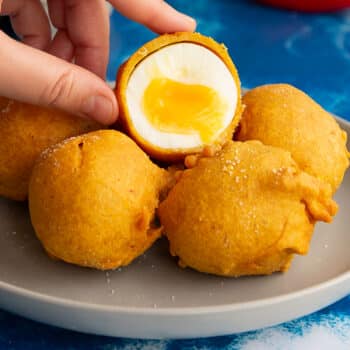
Leave a Reply